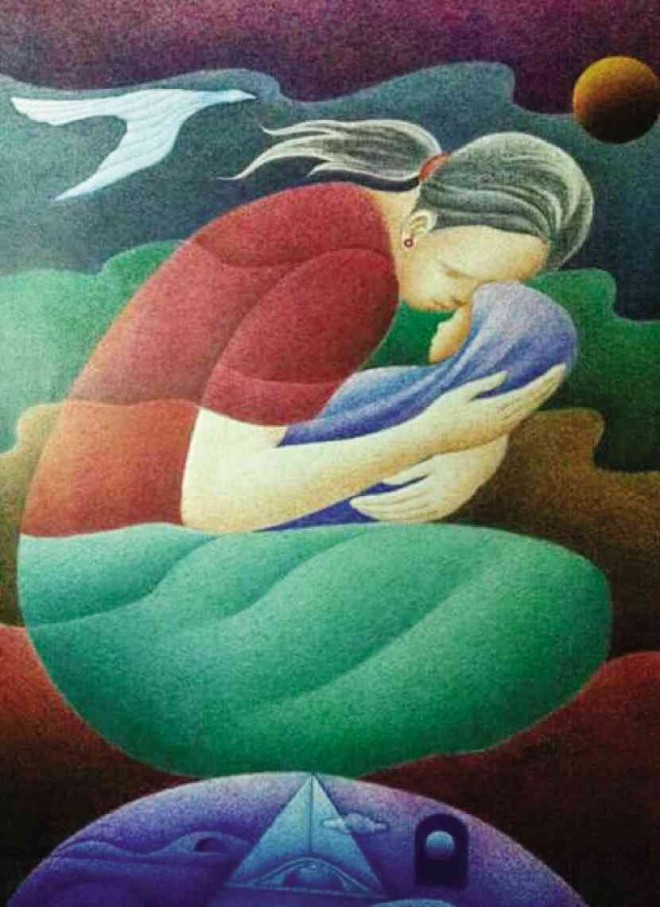At first glance, the works of Elmer Oliva look like colored prints or digital production of nudes, mindscape or a religious icon. Up close, the hues are tiny ball pen dots daubed on a drawing board’s surface a thousand times.
Naga City-born Oliva, 63, says he was inspired to draw dotted images by visual artist Cesar Legaspi in 1987, at the time when acrylic, oil, pastel or watercolor were used to create realistic landscapes, still life and portraits. He is also a fan of Salvador Dali, the famous Spanish surrealist painter whose works depict realistic figures in dreamlike states, even cubist ones on religious themes.
In most cases, Oliva’s compositions mirror his native culture and belief. Take, for examples, the series that pay tribute to the Our Lady of Peñafrancia or Ina, Bicol’s patroness, and other icons; the sili (chili pepper), symbol of Bicolanos’ love for hot food; and dove, or any other subject that lurks in his mind as he dabbled in portraiture in ball pen specks.
Self-taught in the art, he has been passionate about painting since he was in high school. He dropped out after his first year in college and seriously pursued visual arts until it became a profession.
Using ball pen dots, Oliva produced in pastel colors “Gate to Infinity,” a series of illustrations of a dominating arch with symbolic figures of the Holy Trinity—God the Father, the Son and the Holy Spirit—in a backdrop of infinite space. The series won the Philip Morris Art Award in 1995.
He says his figures and forms were seen purely in the eyes of his mind, which defy logic, even as he wanted to engage viewers on the meaning of his creation.
Other works garnered the jurors’ choice awards, like “Chaos,” a composition that earned praise from the Light Foundation.
The nude
Aside from the surrealistic compositions, he dabbles in portraiture and nude paintings of live models and subjects. “Rendering nude strictly requires live models because everyone’s
body is peculiar,” he explains.
The nudes are of voluptuous women with mestiza features in poses that project and define the contours of the female body through shading techniques that bring out dimensions, as in charcoal painting. The shadings are tiny looping patterns of pen marks, filling in spaces to create the impression of being pencil-drawn or charcoal-painted.
Oliva says using dots to create his drawings is totally different from oil, water or other compounds that easily mix to bring about a broad spectrum of colors. With a defined track of tiny specks, the challenge is to maintain fine ink marks while totally avoiding any blot, he explains.
He can finish a 15 x 20-inch work on white illustration board in three weeks on the average, consuming at least three pens.
Recognition
The dot compositions were displayed in New York and Los Angeles (California) in the United States, South Korea and Singapore, and have been widely followed in the national art circle.
His compositions did not escape the attention of art aficionado Marlene Aguilar, who included three of them in an anthology for Filipino visual artists—from Juan Luna to the present—compiled in a coffee table book, “Encyclopedia of Philippine Art Volume I.”
The best of Oliva’s more than a hundred compositions in ball pen dots since the 1990s are now in the possession of private collectors inside and outside of the country, including institutions like the Social Security System and Philippine Airlines.


